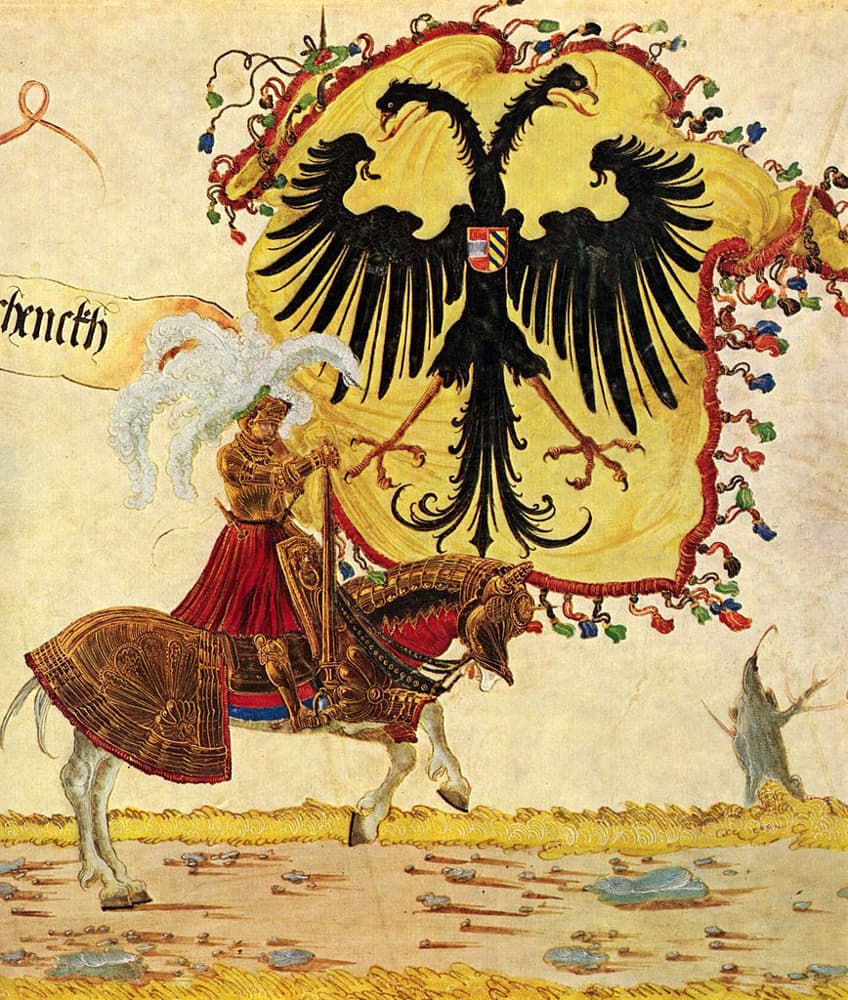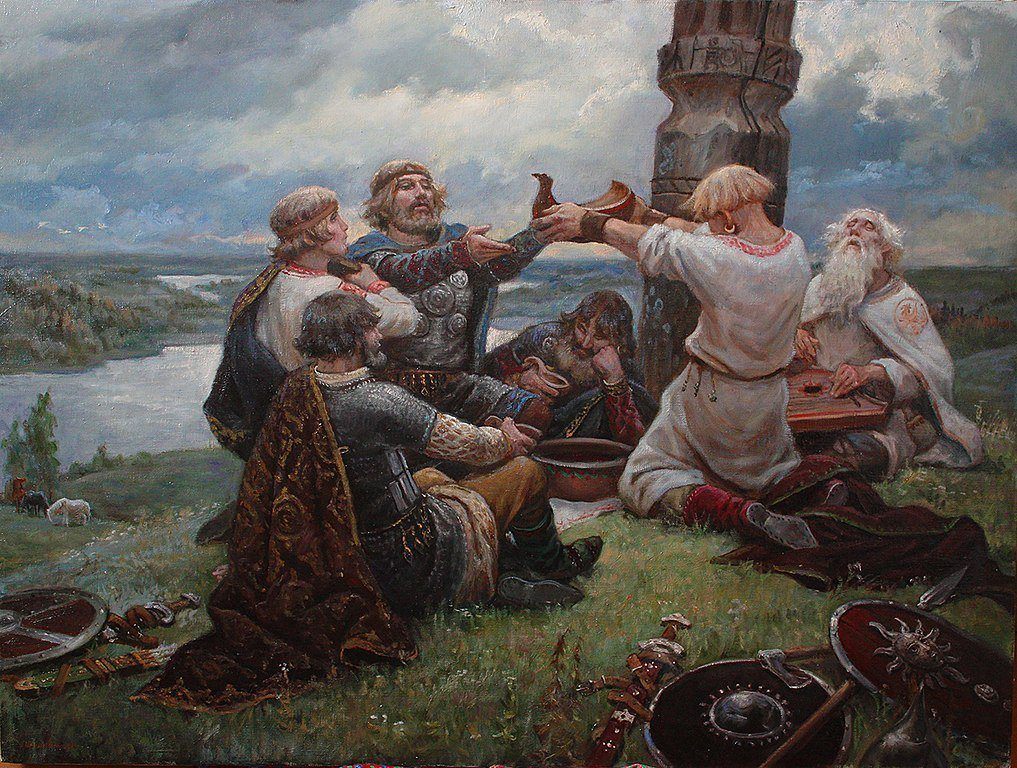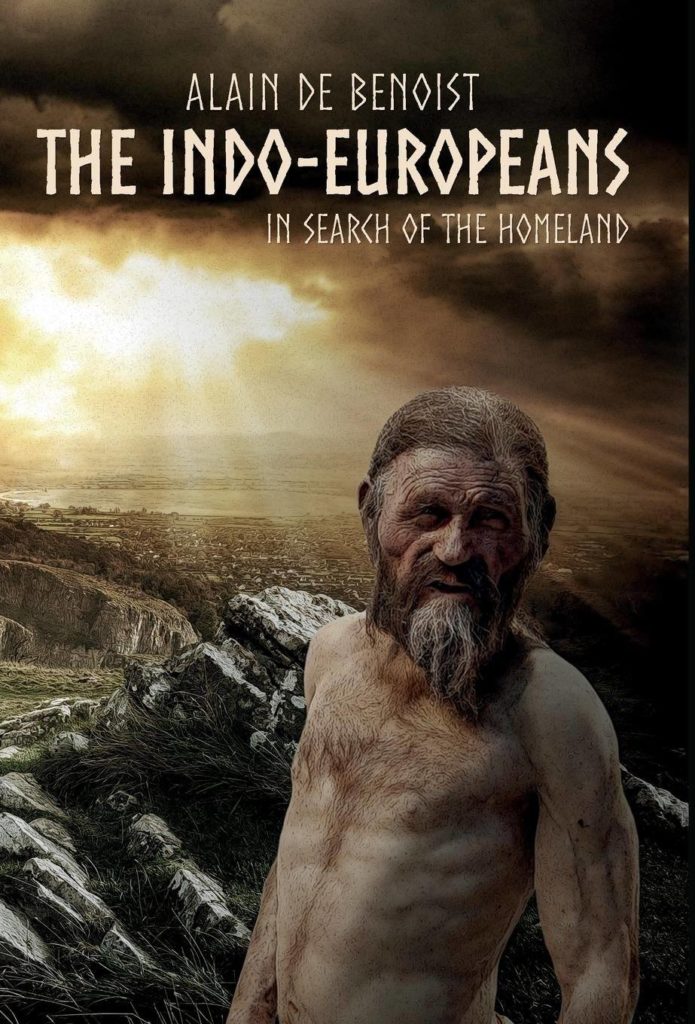The term, “Conservative Revolution,” coined by Armin Mohler (The Conservative Revolution in Germany, 1918-1932), houses various currents of thought, whose most prominent figures are Oswald Spengler, Ernst Jünger, Carl Schmitt and Moeller van den Bruck, among others. The term, perhaps too eclectic and diffuse, has nonetheless gained acceptance and taken root to embody a number of “idiosyncratic” German intellectuals of the first half of the twentieth century, without organizational unity or ideological homogeneity, much less a common political affiliation, who nurtured projects for a cultural and spiritual renewal of authentic values against the demo-liberal principles of the Weimar Republic, and within the dynamics of a process of Palingenesis that called for a new German and European renaissance (a re-generation).
Thus, it seems appropriate to make an attempt to situate the Conservative Revolution (CR) ideologically, especially through certain descriptions of it by its protagonists, complemented by a synthesis of its main ideological attitudes—or rather, rejections—which are, precisely, the only link of association between them all. Because the revolutionary-conservative is defined mainly by an attitude towards life and the world, a style, and not by any program or doctrine.
According to Giorgio Locchi, between 1918 and 1933 the Konservative Revolution never presented a unitary or monolithic aspect and “ended up outlining a thousand apparently divergent directions,” contradictory even, antagonistic at other times. Here we find such varfied characters as the early Thomas Mann, Ernst Jünger and his brother Friedrich Georg, Oswald Spengler, Ernst von Salomon, Alfred Bäumler, Stefan Georg, Hugo von Hofmanssthal, Carl Schmitt, Martin Heidegger, Jacob von Uexküll, Christian Günther, Werner Sombart, Hans Blüher, Gottfried Benn, Max Scheler and Ludwig Klages. All of them were scattered around a network of diverse associations, thought societies, literary circles, semi-clandestine organizations, political groupings, most of the time without any connection whatsoever. These differences have led one of the great scholars of the CR, Stefan Breuer, to argue that the “Conservative Revolution” did not really exist and that such a concept should be eliminated as an interpretative tool. But, as Louis Dupeux argues, the CR was, in fact, the dominant ideology in Germany during the Weimar period.
The origins of the CR—following Locchi’s thesis—must be placed in the mid-nineteenth century, although locating what Mohler calls the “ideas,” or rather, the “driving-images” (Leitbilder) common to all the animators of the CR. Precisely, one of the effects of the collapse of the old and decadent attitude was the discrediting of concepts in the face of the revaluation of images. Aesthetics versus ethics is the expression that best describes this new attitude.
In the first place, the origin of the image of the world is situated in the work of Nietzsche—it is the spherical conception of history, as opposed to the linear one of Christianity, liberalism and Marxism; it is, in fact, an “eternal return,” since history is not a form of infinite and indefinite progress. Secondly, the idea of the “interregnum”: the old order is sinking and the new order is in the process of becoming visible; Nietzsche again being the prophet of this moment. Thirdly, the combat of positive and regenerative nihilism—a “re-volution, a return, reproduction of a moment that has already been.” And fourthly and finally, the religious renewal of an anti-Christian character, through a “Germanic Christianity,” liberated from its original forms, or the resurrection of ancient Indo-European pagan divinities.
It turns out, then, that Nietzsche constitutes not only the starting point, but also the nexus of union of the protagonists of the CR, the teacher of a rebellious generation, who was filtered by Spengler and Moeller van den Bruck, first, and Jünger and Heidegger, later, and as masterfully exposed by Gottfried Benn. In Nietzsche’s own words, we find the first warning of the change: “I know my destiny. Someday my name will be joined to the memory of something tremendous, to a crisis such as there was not on earth, to the deepest conflict of conscience, to a decision pronounced against all that has hitherto been believed, demanded, revered.”
Nietzsche is the tip of an iceberg that rejected the old order in order to replace it with a new renaissance. And the generational representatives of the Conservative Revolution perceived that they could find in the German philosopher a “direct ancestor,” to adapt the revolution of European consciousness to their Kulturpessimismus. Ferrán Gallego has summarized the essence of the Konservative Revolution as follows:
“The praise of the elites… the instrumental conception of the masses, the rejection of the ‘nation of citizens’ [understood as isolated atoms] in favor of the integral nation, the organic and communitarian vision of society, as opposed to mechanistic and competitive formulations, the combination of leadership with hostility to individualism, the adjustment between the negation of materialism and the search for material verifications in the sciences of nature. All this, presented as a great movement of revision of the values of nineteenth-century culture, as an identical rejection of liberalism and Marxist socialism, was still far from being organized as a political movement. The impression that a historical cycle had ended, that the momentum of rationalist ideologies had expired, the contemplation of the present as decadence, the conviction that civilizations are living organisms, were not exclusive to German pessimism, accentuated by the rigor of defeat in the Great War—but it was an international crisis that called into question the very foundations of the contemporary ideological order and that many experienced in terms of a generational task.”
Louis Dupeux insists, however, that the CR does not constitute, at any time, “a unified ideology, but a plural Weltanschauung, a sentimental constellation.” Whether they are considered “idealists,” “spiritualists” or “vitalists,” all the revolutionary-conservatives considered political struggle as a priority, and liberalism was considered the main enemy, although the political struggle was situated in a spiritual world of idealist opposition, not in the objective of the conquest of power, desired by the mainstream parties. According to Dupeux, the formula of this “spiritualist revolution” was to propitiate the passage to the constitution of an “organic national community,” structured and hierarchical, consolidated by the same system of values and directed by a strong State. In short, a “cultural revolt” against enlightened ideals and modern civilization, against rationalism, liberal democracy, the predominance of the material over the spiritual. The ultimate cause of the decadence of the West was not the sentimental crisis of the interwar period (although it does symbolically mark the need for change)—the neutrality of liberal states in spiritual matters had to give way to a system in which temporal and spiritual authority are one and the same, so that only a “total state” can overcome the era of dissolution, represented by modernity. Thus, the work of reformulating the discourse of decadence and the necessary regeneration was to be undertaken by the CR.
If we were to underline certain basic attitudes or tendencies as constitutive elements of revolutionary-conservative thought, in spite of its contradictory plurality, we could point out various aspects, such as: the questioning of the supremacy of rationality over spirituality; the rejection of the political activity of the demolitionist parties; the preference for a popular, authoritarian and hierarchical, non-democratic State, as well as a distancing from both the “old conservative traditionalism” and the capitalist and Marxist “new liberalisms,” while emphasizing the experience of war and combat as the ultimate realization. The reformulation of the ideology was based on the need to build a “third way” between capitalism and communism (whether the Prussian socialism of van den Bruck, the revolutionary nationalism of Jünger, or the national-Bolshevism of Ernst Niekisch). And over and above these attitudes there hovered the common feeling for the need to sweep away the decadent and corrupt present as a way to regain contact with a life founded on eternal values.
Mohler himself, who understood the CR as “the spiritual movement of regeneration which sought to sweep away the ruins of the nineteenth century and create a new order of life”—just as Hans Freyer thought that it would “sweep away the wreckage of the nineteenth century”—provides the most convincing evidence for a classification of the central motifs of CR thought which, according to his analysis, revolve around the consideration of the end of a cycle; its sudden metamorphosis, followed by a renaissance in which the “interregnum” that began with the generation of 1914 will come to a definitive end. To this purpose, Mohler rescued a series of German intellectuals and artists who nurtured community projects for cultural renewal, based on a genuine rejection of the dem-liberal principles of the Weimar Republic.
For Mohler, according to Robert Steuckers, the essential point of contact of the CR was a non-linear vision of history, although he did not simply take up the traditional cyclical vision, but a Nietzschean spherical conception of history. Mohler, in this sense, never believed in universalistic political doctrines, but in strong personalities and their followers, who were capable of opening new and original paths in existence.
The terminological combination “Konservative-Revolution” was already associated as early as 1851, by Theobald Buddeus; subsequently by Yuri Samarin, Dostoyevsky, and in 1900 Maurras. But in 1921, Thomas Mann was the first to use the expression CR in a more ideologized sense, in his Russische Anthologie, speaking of a “synthesis… of enlightenment and faith, of freedom and obligation, of spirit and body, god and world, sensuality and critical attention, of conservatism and revolution.” The process of which Mann spoke “is none other than a conservative revolution of a scope such as European history has not known.”
The expression Conservative Revolution was also prevalent in the theses disseminated by the European Cultural Union (Europïsche Kulturband), led by Karl Anton, Prince of Rohan, a Europeanist aristocrat and Austrian cultural leader, whose 1926 work, Die Aufgabe unserer Generation (The Task of Our Generation)—inspired by Ortega y Gasset’s The Modern Theme—uses the term on several occasions. However, the phrase “Conservative Revolution” gained full popularity in 1927, with Hugo von Hofmannsthal’s most famous Bavarian lecture, when he set out to discover the truly Herculean task of the Conservative Revolution: the need to turn the wheel of history back four hundred years, since the ongoing restorative process “in reality begins as an internal reaction against that spiritual revolution of the 16th century” (he is referring to the Renaissance). Hofmannsthal, in short, called for a movement of reaction that would allow man to escape from modern dissociation and rediscover his “link with the whole.”

In the words of one of the most prominent representatives of the Conservative Revolution, Edgar J. Jung: “We call Conservative Revolution the revival of all those fundamental laws and values without which man loses his relationship to Nature and to God and becomes incapable of building an authentic order. In place of equality, inner worth is to be imposed. In place of social conviction, just integration into statal society; mechanical choice is replaced by the organic growth of leaders. In place of bureaucratic coercion, there is an inner responsibility that comes from genuine self-determination. The pleasure of the masses is replaced by the right of the personality of the people.”
Another commonplace of the Conservative Revolution is the self-consciousness of those who belonged to it, that they were not merely conservatives. Indeed, they were at pains to distance themselves from groups belonging to “old conservatism” (Altkonservativen) and from the ideas of “reactionaries” who only wished to “restore” the old. The central concern was to “combine revolutionary ideas with conservative ones,” or “push them in a revolutionary-conservative way,” as Moeller van den Bruck proposed.
Of course, the “conservative revolution,” however much the so-called “neoconservatives” (be they of the Reagan, Bush, Thatcher, Aznar, Sarkozy or Merkel type) may regret it, has nothing to do with the “conservative reaction” (an authentic “counter-revolution”) that they pretend to lead against progressive liberalism, postmodern communism and the counter-culturalism of the left. The weakness of the classic-traditional right lies in its inclination towards centrism and social democracy (“the seduction of the left”), in a frustrated attempt to close the way to socialism, sympathizing, even, with the only possible values of its adversaries (egalitarianism, universalism, false progressivism). A serious mistake for those who have never understood that political action is just one more aspect of a long-standing ideological war between two completely antagonistic conceptions of the world.
Finally, the neoconservative right has not grasped Gramsci’s message, has failed to see the threat of cultural power over the State and how the latter acts on the implicit values that provide lasting political power, ignoring a truism: no change is possible in power and in society, if the transformation it seeks to impose has not first taken place in minds and spirits. It is a bet on consumerist, industrial and accommodating “neoconservatism,” the opposite of what is being imposed today—to recreate a “conservative revolution” with a European patent which, in Jünger’s phrase, merges the past and the future in a fiery present.
Meanwhile, counter-revolutionary “neo-conservatism,” based on the thinking of the German émigré Leo Strauss, is nothing but a kind of “reaction” to the loss of values that have an expiration date (precisely his own, those of the mercantilist and imperialist Anglo-American bourgeoisie). Their principles are ideal and humanitarian universalism, savage capitalism, academic traditionalism and totalitarian bureaucratism. For these neocons, the United States appears as the most perfect representation of the values of freedom, democracy and happiness based on material progress and a return to “Judeo-Christian” morality, with Europe’s obligation to copy this triumphant model.
Anglo-American “neoconservatism,” reactionary and counter-revolutionary, is, in reality, a democratist and traditionalist neo-liberalism—read Fukuyama—heir to the principles of the French Revolution. The Conservative Revolution, however, can be defined, according to Mohler, as the authentic “anti-French Revolution”: the French Revolution disintegrated society into individuals; the Conservative aspired to reestablish the unity of the social whole; the French proclaimed the sovereignty of reason, disarticulating the world to apprehend it in concepts; the Conservative tried to intuit its meaning in images; the French believed in indefinite progress in a linear march; the Conservative returned to the idea of the cycle, where setbacks and advances are naturally compensated.
In the antagonistic Conservative Revolution, neither “conservation” refers to the attempt to defend some expired form of life, nor “revolution” refers to the purpose of accelerating the evolutionary process in order to incorporate something new into the present. The former is typical of the old reactionary conservatism—also of the ill-named neoconservatism—which lives from the past; the latter is the hallmark of false progressivism, which lives from the most absolute present-future.
While in much of the so-called Western world, the reaction to the democratization of societies has always moved in the orbit of a sentimental conservatism, inclined to extol the past and achieve the restoration of the old order, the revolutionary conservatives spared no effort to mark differences and distances with what for them was simple reactionaryism, even if it was, in Hans Freyer’s expression, a Revolution from the right. The Conservative Revolution was simply a spiritual rebellion, a revolution without any goal or future messianic kingdom.
Jesús Sebastián Lorente is a Spanish lawyer. This article appears through the kind courtesy of Elmanifesto.
Featured: The imperial banner and sword of Emperor Maximilian, by Albrecht Altdorfer; painted ca. 1513-1515.


